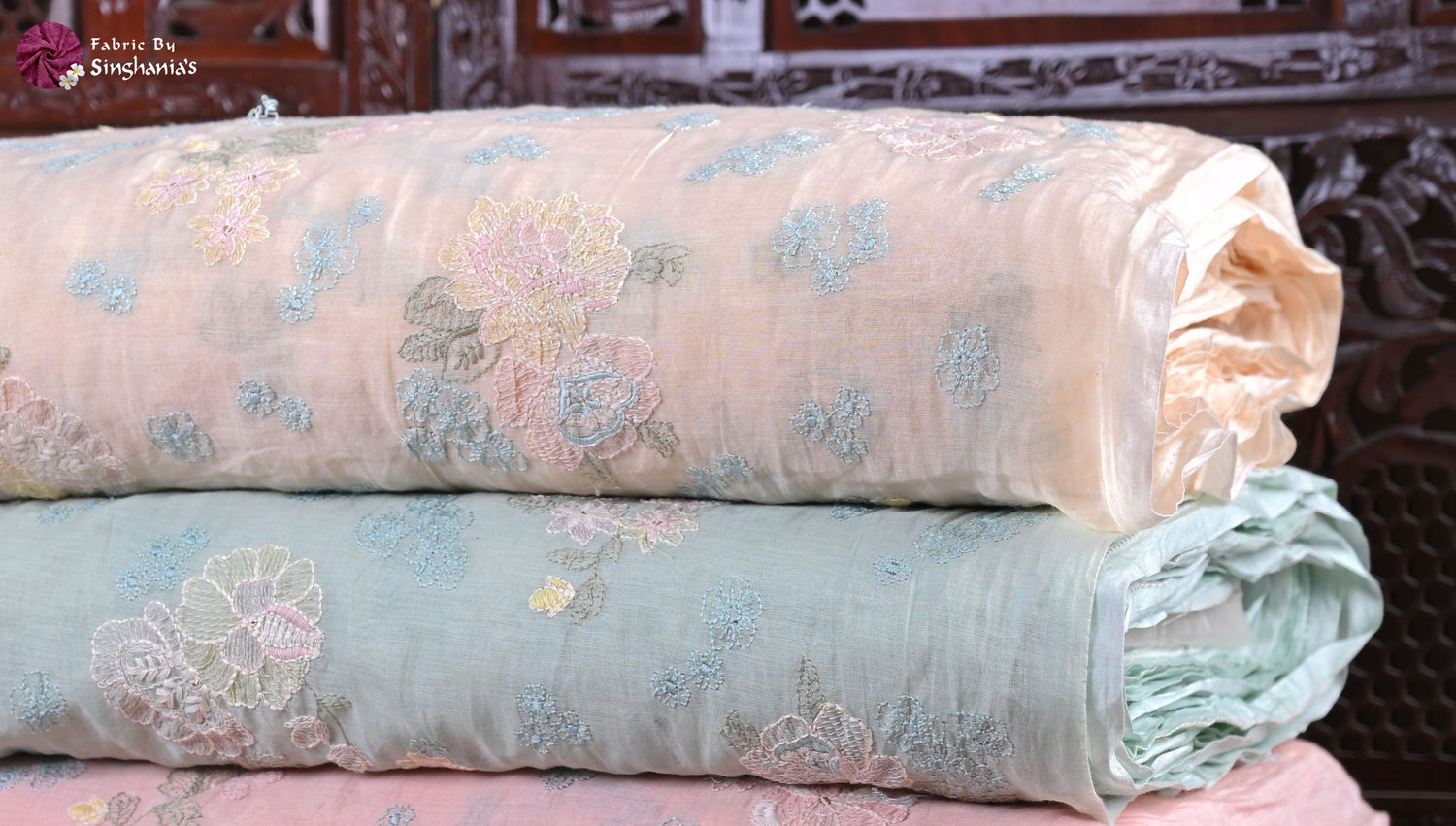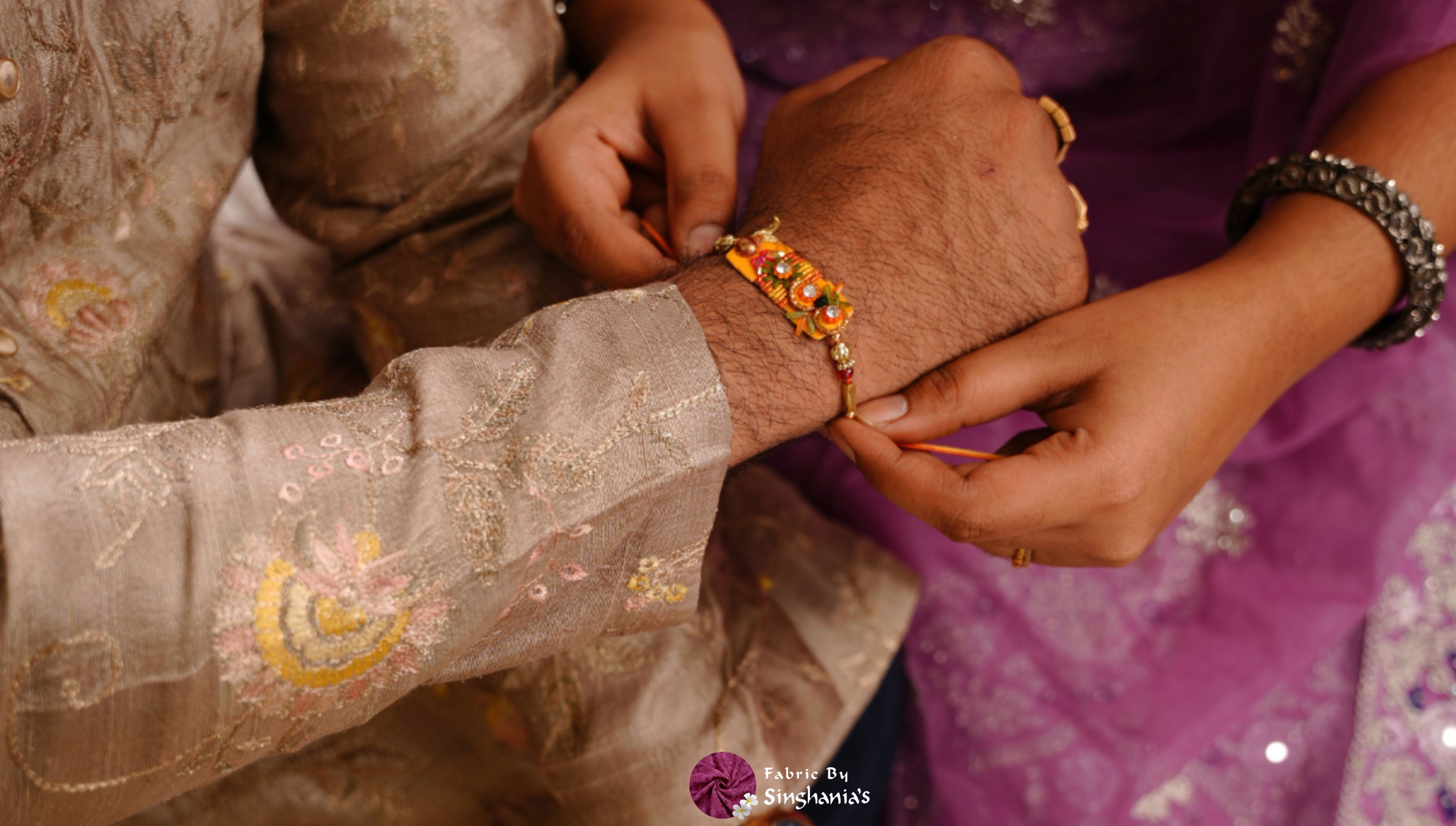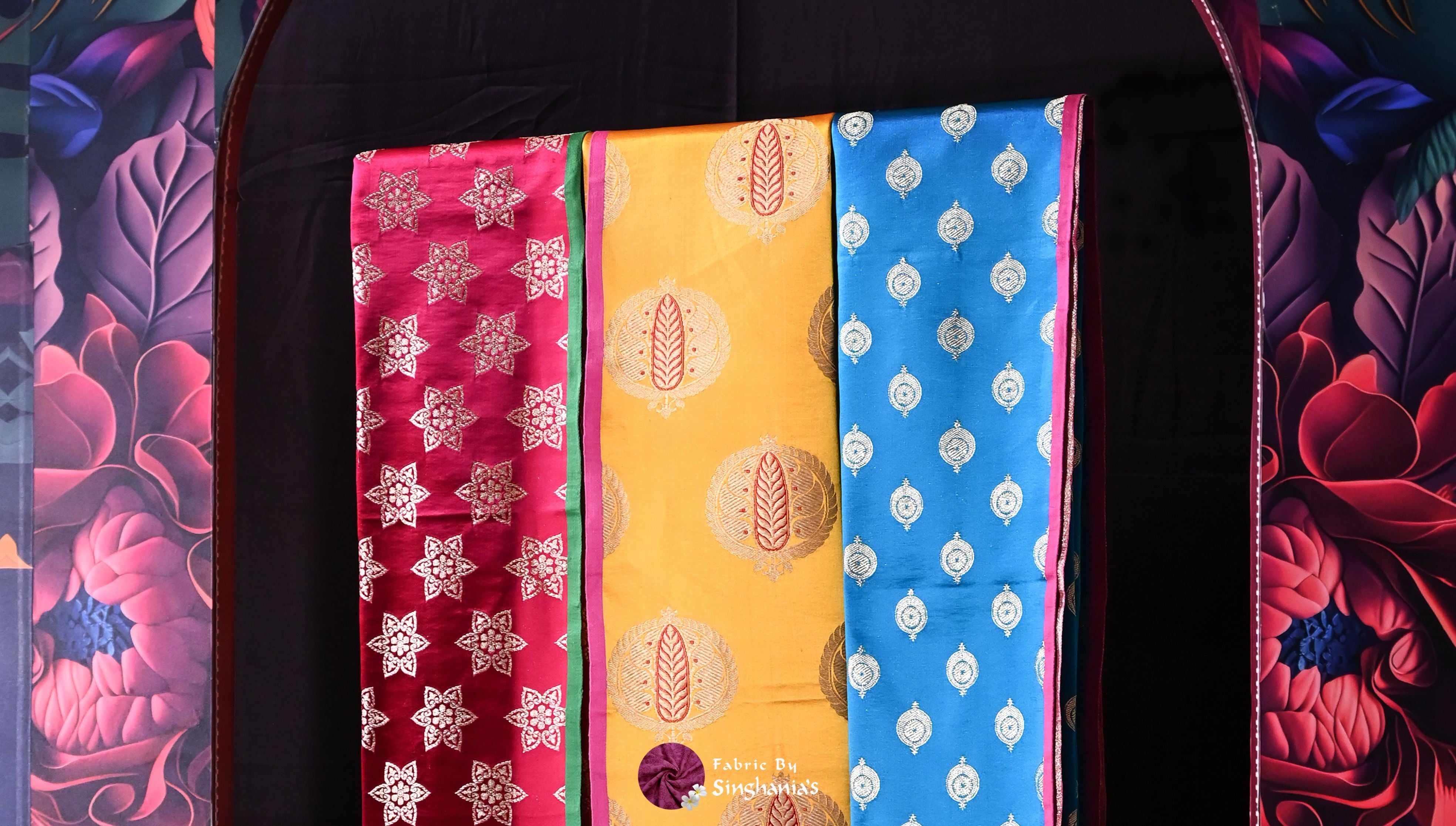
Chanderi fabric is synonymous with grace and tradition. Originating from the small town of Chanderi in Madhya Pradesh, India, this fabric has woven itself into the heart of Indian fashion and is revered for its lightweight, bright texture, and rich patterns. It has a distinct place in traditional Indian textiles, loved for its beauty and versatility, making it a top choice for sarees, kurtas, and even modern fashion pieces. In this guide, we’ll dive deep into the history, characteristics, and applications of chanderi fabric to understand why it continues to be a beloved material in both ethnic and contemporary wardrobes.
Understanding Chanderi Fabric
What is Chanderi Fabric?
Chanderi fabric is a traditional handwoven fabric known for its fine texture and transparency. It is made primarily using silk, cotton, or a blend of both, often adorned with zari (metallic threads). The fabric is lightweight and has a subtle sheen, making it perfect for formal and festive wear. Chanderi's unique texture comes from its weaving process, which creates a delicate balance between silk and cotton threads, resulting in a fabric that is both airy and durable.

Whether you are looking for an ethereal saree for a special occasion or an elegant kurta for everyday wear, Chanderi fabric can elevate any look with its luxurious appeal. Fabric by Singhania’s offers a wide range of Chanderi fabrics in different patterns and colors, along with customization options to tailor the fabric to your needs. Plus, they provide video call facilities to help you explore their collection from the comfort of your home.
Characteristics of Chanderi Fabric
Chanderi fabric is prized for its unique qualities, which include:
Lightweight and Sheer: Chanderi is featherlight, making it comfortable to wear for long hours, especially in warmer climates. Its gauzy texture gives it a delicate feel, perfect for formal occasions.
Intricate Patterns: One of the standout features of Chanderi fabric is its intricately woven patterns, often depicting motifs such as florals, peacocks, and traditional geometric designs. The patterns are typically woven using gold or silver zari, adding a touch of royalty to the fabric.

Breathability: Despite its ethereal appearance, Chanderi fabric is breathable, allowing for comfort even in humid weather. The blend of cotton and silk ensures that it is not only elegant but practical for daily wear as well.
The History of Chanderi Fabric
Historical Background of Chanderi Fabric
The roots of Chanderi fabric date back to the Vedic period, with its weaving tradition flourishing during the reign of the Scindia rulers in the 18th century. It is said that the town of Chanderi became a prominent weaving center because of its strategic location along trade routes connecting North and South India.
Historically, Chanderi fabric was worn by royalty and nobility, thanks to its luxurious texture and intricate designs. Over time, it became a symbol of elegance and sophistication in Indian textiles. The artistry of Chanderi weaving was passed down through generations, preserving the rich cultural heritage that still resonates today.
Traditional Uses of Chanderi Fabric
Traditionally, Chanderi fabric was used primarily for making sarees and dupattas. The fabric’s shimmering texture and detailed patterns made it ideal for festive and bridal wear. Over time, its use has expanded to include garments such as kurtas, lehengas, and even home textiles like curtains and cushion covers.
Applications of Chanderi Fabric in Modern Fashion
Chanderi in Ethnic Wear
Chanderi fabric remains a favorite in ethnic wear, particularly for sarees, kurtas, and lehengas. The fabric’s ability to drape beautifully while maintaining its lightweight feel makes it a go-to choice for occasions like weddings, festivals, and formal gatherings. Chanderi sarees, in particular, are cherished for their regal appearance and are often adorned with intricate zari work.
Chanderi in Contemporary Fashion
While Chanderi fabric has long been associated with traditional wear, it is increasingly being used in contemporary fashion. Designers are blending Chanderi fabric with western silhouettes, creating unique fusion pieces that offer the best of both worlds. Whether it’s a flowy Chanderi dress or a structured jacket, this fabric adds an element of elegance and sophistication to any outfit.
Care and Maintenance of Chanderi Fabric
Washing and Cleaning Chanderi Fabric
Caring for Chanderi fabric requires some attention to ensure its longevity. Since it is a delicate material, it is best to hand wash Chanderi garments using mild detergent and cold water. Avoid using harsh chemicals or machine washing, as this can damage the fabric’s texture and color. If hand washing is not an option, dry cleaning is recommended for Chanderi silk fabric.

Storing Chanderi Fabric Garments
Proper storage is essential to maintaining the beauty of Chanderi fabric. To prevent damage, store your Chanderi garments in a cool, dry place, preferably wrapped in a muslin cloth. This helps to protect the fabric from moisture and dust, ensuring that your garments retain their sheen and intricate detailing.
Chanderi fabric is more than just a textile; it’s a piece of history and art that has stood the test of time. From its origins in ancient India to its place in modern fashion, Chanderi continues to be cherished for its lightweight texture, intricate patterns, and versatile appeal. Whether you’re wearing a traditional Chanderi saree or a contemporary Chanderi dress, this fabric elevates any outfit with its understated elegance and timeless charm.
At Fabric by Singhania’s, you’ll find an exquisite range of Chanderi fabrics in different patterns and colors, perfect for both ethnic and contemporary fashion. With customization options and video call facilities, you can easily explore their collection and create unique pieces tailored to your style. Elevate your wardrobe with the luxury and sophistication of Chanderi fabric, a textile that truly embodies the art of Indian craftsmanship.



